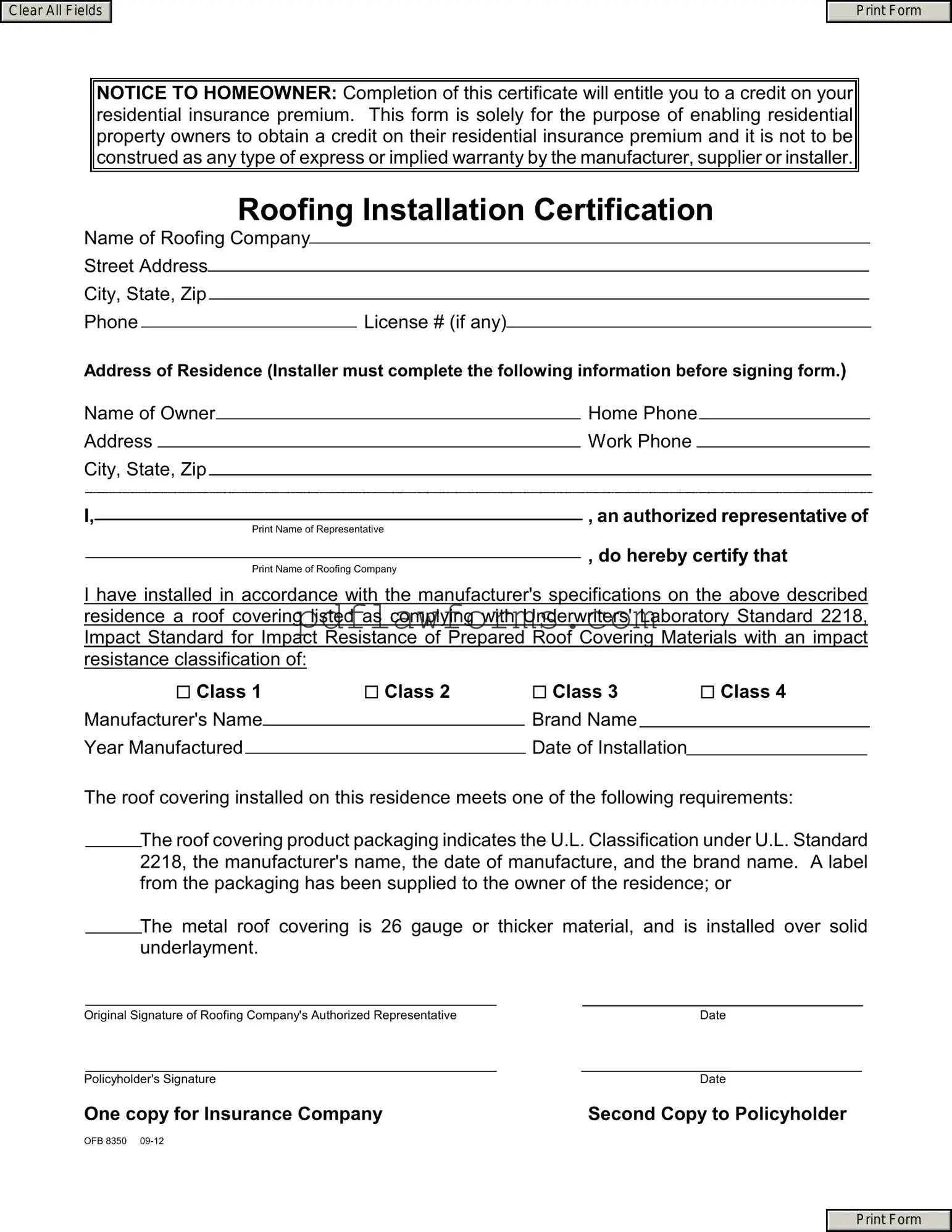Filling out the Roofing Certificate form can be straightforward, but several common mistakes can lead to complications. One frequent error is omitting essential information about the roofing company. Homeowners must ensure that the name, address, and license number of the roofing company are clearly provided. Missing this information may delay the processing of the certificate and the associated insurance premium reduction.
Another common mistake involves inaccuracies in the homeowner's information. Homeowners should double-check that their name, home phone number, and address are correctly entered. Any discrepancies can cause confusion and may lead to denial of the premium reduction. It is crucial to ensure that all contact details are accurate and up to date.
Many people overlook the importance of the date of installation. This date must reflect when the roofing work was completed. Failing to provide the correct date can result in complications with the insurance company, as they may require this information for their records. Additionally, it is advisable to keep a copy of any documentation related to the installation.
Another mistake involves the classification of the roof covering material. Homeowners must ensure they select the correct impact resistance classification from the options provided. Misclassifying the roof covering can lead to issues when submitting the form, as the insurance company relies on accurate classifications to determine eligibility for premium reductions.
Some individuals may not provide the necessary labeling information for the roofing materials. The form requires a checkmark indicating whether the packaging or individual products are labeled according to Underwriters’ Laboratory Standard 2218. Failing to check this box can create ambiguity and may result in the form being rejected.
Signatures are also a critical component of the Roofing Certificate form. The authorized representative of the roofing company must provide their original signature and the date. A missing or illegible signature can render the form invalid, causing delays in obtaining the premium reduction.
Lastly, homeowners sometimes neglect to keep a copy of the completed form. It is essential to retain a copy for personal records and to provide to the insurance company. Without a copy, homeowners may face challenges in future communications regarding their insurance premiums.
By being mindful of these common mistakes, homeowners can ensure that their Roofing Certificate form is completed accurately and efficiently. This attention to detail will help facilitate a smoother process in obtaining the desired reduction in residential insurance premiums.
